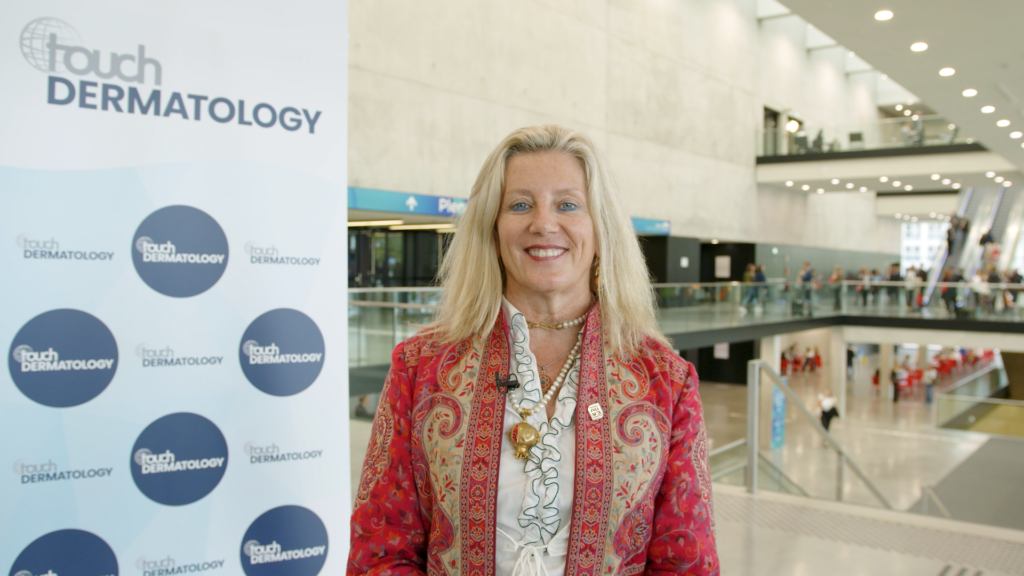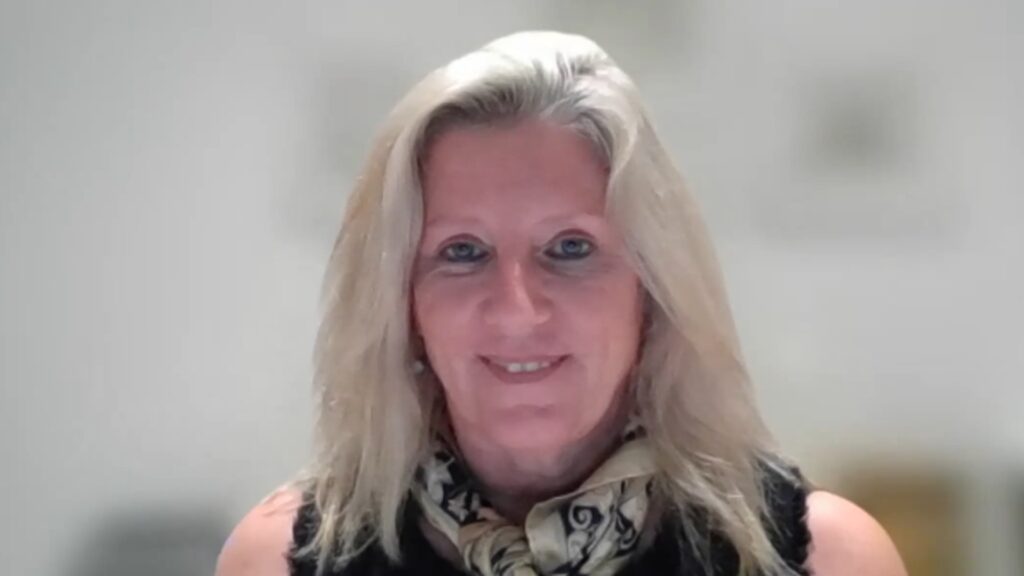Touch Medical Media coverage of data presented at EADV 2023:
There are a number of cutaneous manifestations associated with lupus erythematosus, pushing forward for innovative approaches and emerging investigational therapeutics in clinical trials. touchDERMATOLOGY were delighted to speak with Dr. Victoria P. Werth (University Perelman School of Medicine, Philadelphia, PA, USA) to discuss the key developments, novel insights and future directions in the field of lupus erythematosus.
This information is provided solely by Touch Medical Media and is independent of any sponsorship or affiliation with the European Academy of Dermatology & Venereology (EADV).
The presentation ‘New insights and therapeutic approaches in Lupus Erythematosus‘ (Presentation ID PLB-03) was presented at EADV 2023, Berlin, 11-14 October 2023 #EADVCongress.
Questions
- Could you tell us a little about lupus erythematosus and the unmet needs in its treatment? (0:18)
- What cutaneous manifestations are associated with lupus erythematosus? (1:45)
- What novel therapeutic approaches are changing the way that lupus is treated? (2:16)
- What investigational therapeutics show promise for lupus erythematosus in clinical trials? (3:10)
- What are the key developments and future directions in the field of lupus erythematosus? (5:00)
Disclosures: Victoria Werth has received grants from Celgene, Amgen, Janssen, Biogen, Gilead, Viela; Horizon therapeutics, and Ventus; and is/has been a consultant (and received honorarium) for Astra-Zeneca, Pfizer, Biogen, Celgene, Resolve, Janssen, Gilead, Lilly, BMS, Nektar, Abbvie, Viela, GSK, EMD Serona, Sanofi, Anaptysbio, Amgen, Merck Kyowa Kirin, Rome Therapeutics, and Xencor; and is on the Lupus Foundation of America advisory board.
Support: Interview and filming supported by Touch Medical Media Ltd. Interview conducted by Victoria Jones and Katey Gabrysch.
Filmed in coverage of the EADV Annual Meeting.
This content was developed by Touch Medical Media and is not affiliated with the European Academy of Dermatology & Venereology (EADV) or the congress.
Click here for more content on autoimmune diseases & for further EADV 2023 highlights visit here.
I’m, Victoria Werth. I am a Professor of Dermatology and Medicine at the University of Pennsylvania, USA, and also the Head of Dermatology at the Philadelphia VA Hospital.
Could you tell us a little about lupus erythematosus and the unmet needs in its treatment?
Lupus is really a broad disease, in that you can have other systemic disease, skin disease or a mix. I would say the patient needs are currently high, with no new drugs being approved in many specifically for cutaneous lupus.
Now, we understand more about the disease we know what cytokines are important, which cells are in the skin, and we know for instance with current therapies we have, such as hydroxychloroquine, 55-60 % of people improve, taking several months to get better, during which time people can be still be getting new lesions and new scarring or permanent alopecia.
Therefore, there is a huge need for drugs that work quickly and currently, we know that hydroxychloroquine is safe, but it does require monitoring, with drug-drug interactions needing close monitoring. So it would be really helpful to have improved drugs available. We now understand that there are different responses from different patients in terms of the therapies that are needed. If patients don’t respond to hydroxychloroquine, very often they will have to go on to other therapies that have more side effects, whether it be things like lenalidomide or immunosuppressants like methotrexate or mycophenolate mofetil, so this is an area that requires improvement.
What cutaneous manifestations are associated with lupus erythematosus?
One of the really interesting things is there are many different ways that patients can look. Patients can have a hard time getting a correct diagnosis, as there is diseases of discoid lupus, subacute cutaneous lupus, tumid lupus, which may not have the same changes at the dermal epidermal junction. There are patients who have involvement in the fat, and that looks also really different. There are many different variations in lupus, and there are also other things that can be mimickers.
What novel therapeutic approaches are changing the way that lupus is treated?
We now know that type I interferons are really important in the skin. There are now quite a number of novel therapies that are finding ways to interfere with the interferon pathway, most specifically, anifrolumab. Anifrolumab is a monoclonal antibody that targets the type I IFN receptor subunit 1, and has now been approved for use in systemic lupus (SLE). We still cannot treat patients with anifrolumab who only have cutaneous lupus (CLE) mainly because of insurance reasons. Soon, there will be cutaneous lupus studies which will be a really important step in providing access to our patients who have predominantly skin disease, and the suggestion is that this approach has been very helpful for people who have skin disease whether or not they have SLE, but right now with the CLE patients, the data available is mainly case reports and case series.
What investigational therapeutics show promise for lupus erythematosus in clinical trials?
So there’s a been a number of really exciting trials recently. One of them is with litifilimab, which has effects on an anti BDCA2 antibody. It causes internalization of the BDCA2 of receptor that’s on plasma cytokine dendritic cells, leading to decreases in type I interferons and the patients respond rapidly within a month drop in the interferon upregulated proteins that we see in the skin.
Phase two trials showed good efficacy and three different doses relative to placebo. This is pretty exciting, and they’re going from phase two to phase three trial.
There is another drug, daxdilimab, which is ILT7 antibody, and ILT7 is a antigen on the plasma cytroid dendritic cell, and this antibody depletes PDCs and has a similar effect of getting rid of type one interferons and the responders, which is very exciting as it has been able to show, a rather dramatic improvement at the highest dose. There was a SLE trial of ducravacitinib, which, as we know, has been approved for psoriasis. SLE patients who had skin disease had a very important improvement in their skin manifestations documented by the CLASI activity score, and has moved to a phase two trial, and is going into phase three, two trials for SLE and one trial for CLE.
As I mentioned, anifrolumab will be going into a CLE trial. There are a number of other trials that are ongoing or starting, and so this is a really rich time for hopefully making better therapies available for our patients who don’t respond to current therapies.
What are the key developments and future directions in the field of lupus erythematosus?
One thing to highlight is that we need to understand more about the disease, aetiology. We are working with NIH Accelerating Medicine Partnership, to investigate skin biopsies by spatial transcriptomics, and investigating bloods as part of a a consortium that will allow us to be able to understand more about the heterogeneity of the cells in the pathways that are activated and being able to see what drugs they respond to and how these pathways change over time. This will help us gain a better idea of how to individualize therapies. Once completed the phase two, three, even phase one trials will be really important. To enable improved, more effective and faster acting medications available for our patients.









